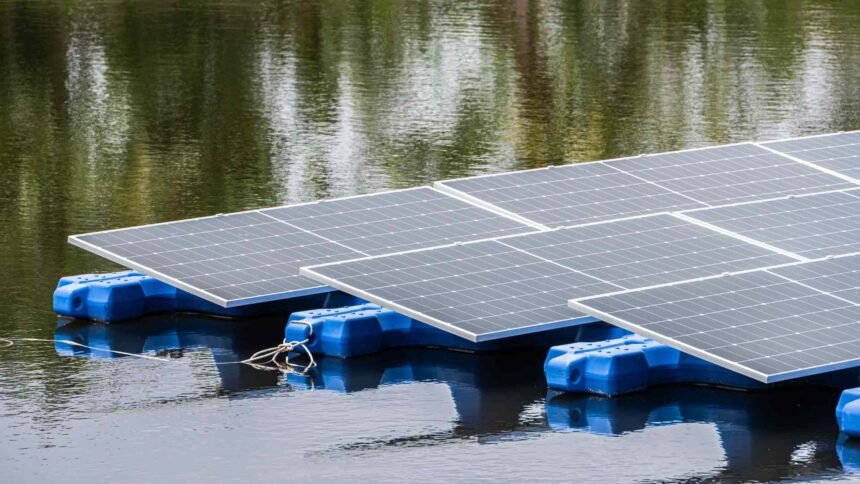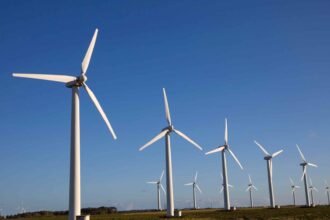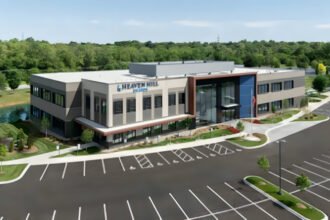Noria Energy Launches US Floating Solar Project
Noria Energy, a leader in floating solar technology, has begun construction on the Aurea Solar project in Golden, Colorado. This 50-kilowatt pilot marks a milestone as the first floating solar installation in the United States to incorporate tracking technology. The project promises to boost energy production while addressing water conservation challenges, setting a new standard for renewable energy innovations.
Project Overview
Engineers at Noria Energy broke ground this week on Aurea Solar, a compact yet ambitious floating photovoltaic (PV) system. The installation sits on Fairmount Reservoir, a key water storage site owned by the Consolidated Mutual Water Company (CMWC). CMWC supplies clean water to over 100,000 customers in the greater Denver area, making this project a practical blend of energy and utility needs.
The 50 kW array will generate power directly for the onsite pumps that regulate the reservoir’s water levels. By floating the panels on water, Noria avoids using valuable land space, a common hurdle in solar development. This approach also taps into underutilized water bodies, turning them into productive energy sources. Experts predict floating solar could play a big role in the US renewable sector, especially in regions with limited land but abundant reservoirs.
Noria, founded in 2018 and based in Sausalito, California, specializes in floating solar for water utilities, agriculture, and community programs. The company has already deployed systems in various settings, but Aurea Solar stands out for its pioneering use of trackers on water. This project builds on global trends, where floating solar has grown rapidly in Asia and Europe, but remains nascent in the US.
Innovative Technology at the Core
At the heart of Aurea Solar lies Noria’s AquaPhi tracking technology. This system allows entire “solar islands”—clusters of panels—to rotate and follow the sun’s path throughout the day. Traditional fixed solar panels capture sunlight at a static angle, but trackers adjust dynamically, increasing energy output by 10 to 20 percent.
AquaPhi’s design is versatile. Teams can install it on new projects or retrofit it onto existing floating solar setups, making it a flexible upgrade for older systems. The technology uses durable mooring solutions to keep the arrays stable on water, even in varying conditions. Partners like Hazelett Marine, experts in marine moorings, provide the anchoring tech to ensure reliability.
Beyond energy gains, the floating panels offer environmental perks. They shade the water surface, cutting evaporation rates by up to 49.7 percent, according to a study from Taylor & Francis. For water utilities like CMWC, this means conserving precious resources in a drought-prone state like Colorado. The project demonstrates how solar can support water management, a critical issue as climate change intensifies.
Noria’s CEO, Ron Stimmel, highlighted the tech’s potential in a recent statement. He explained that AquaPhi makes clean energy more accessible and efficient, especially for customers with water-based assets.
Partnerships Driving Success
Noria Energy teams up with several key players to bring Aurea Solar to life. CMWC hosts the project and benefits directly from the generated power. Jarod Roberts, CMWC’s chief of water resources, expressed enthusiasm about the dual benefits. “We are excited to embark on the prospects of floating solar as a means to produce and conserve energy, and to improve our water supply by reducing how much is lost to evaporation,” Roberts said.
GRID Alternatives, a nonprofit focused on renewable energy access and workforce training, joins the effort. They bring expertise in community empowerment, ensuring the project creates local jobs and educational opportunities. Hazelett Marine rounds out the team with their specialized mooring systems, tailored for floating solar stability.
These collaborations underscore a growing trend in the energy sector: partnerships between tech innovators, utilities, and nonprofits. Together, they tackle barriers like high upfront costs and technical challenges, paving the way for scalable solutions. Noria’s Stimmel praised the group dynamic. “We couldn’t be more excited to work with our partners CMWC, GRID Alternatives, and Hazelett to deploy our powerful technology that helps make clean energy more accessible to more customers,” he noted.
Timeline and Broader Implications
Construction crews are already at work, assembling the floating arrays and integrating the trackers. Noria aims to commission the project in September 2025, just weeks from now. This quick timeline reflects the pilot’s modest scale, allowing for rapid testing and data collection.
Once online, Aurea Solar will serve as a proof-of-concept for larger US deployments. The country lags in floating solar, with only a handful of projects so far. Recent announcements, like Third Pillar Solar’s 500 MW plans in Texas and D3Energy’s 6 MW installation in Ohio, signal rising interest. Noria’s tracker innovation could accelerate adoption, offering higher yields and better returns on investment.
Experts see floating solar as a win for businesses and the environment. It avoids land conflicts, cools panels for better efficiency, and integrates with existing infrastructure like reservoirs and canals. In Colorado, where water scarcity looms large, projects like this could help utilities cut costs and emissions.
As Ron Stimmel put it, this is about making renewables work harder for everyday needs. The Aurea Solar project generates power and sparks conversations on sustainable water-energy links.
Looking Ahead
Noria Energy’s move sets a benchmark for US solar innovation. By starting construction on the first tracker-equipped floating project, the company pushes boundaries in a field ripe for growth. Stakeholders watch closely, hoping Aurea Solar inspires widespread adoption.
In a world grappling with climate goals, initiatives like this remind us that smart tech and strong partnerships can drive real change. As the panels float into place on Fairmount Reservoir, they symbolize a brighter, more efficient future for American renewables.









